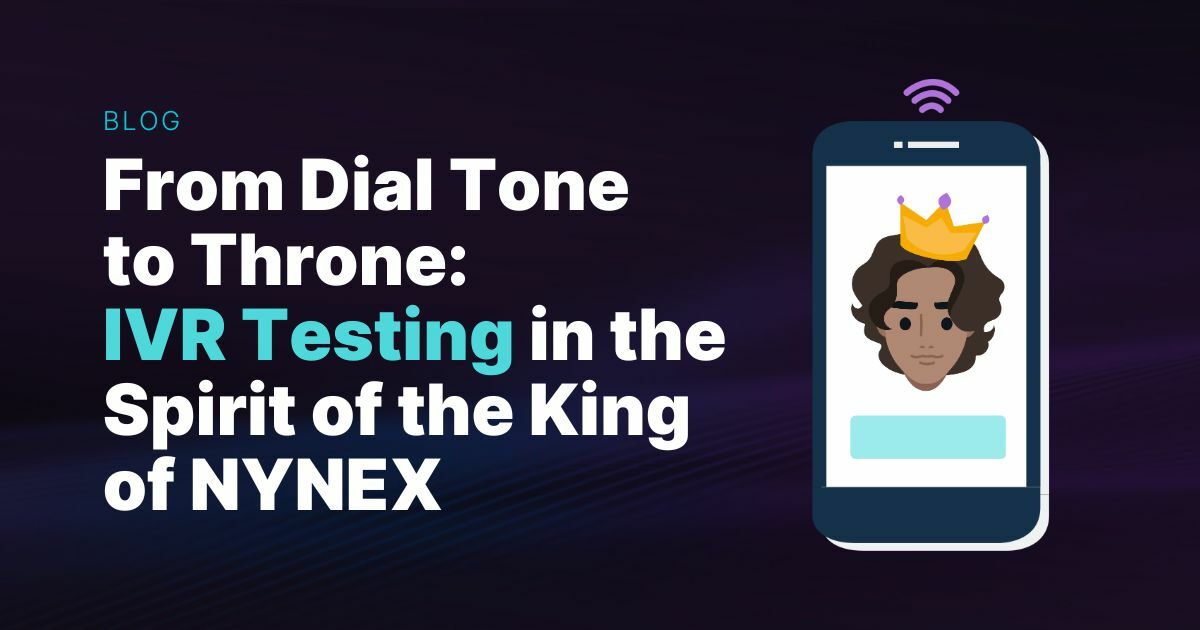From Dial Tone to Throne: IVR Testing in the Spirit of The King of NYNEX

TL;DR: IVR systems streamline customer interactions but also present a unique attack surface that demands attention. This blog explores IVR penetration testing methodologies, common vulnerabilities, and strategies to secure these critical systems against modern threats.
Phreaking, the practice of hacking phone lines, is central to the character Phantom Phreak in Hackers (1995). When introducing himself to the protagonist, Dade, Phantom Phreak calls himself "The King of NYNEX," referring to the New York-based telecommunications company that operated in the area during the film's production. This title underscores his expertise in phreaking and his pride in mastering the telecommunications systems of the time.
Interactive Voice Response (IVR) systems have become a staple of modern customer service, powering efficient interactions across industries like healthcare, finance, and retail. These systems simplify communication and elevate client experiences but also introduce a hidden challenge: a unique attack surface ripe for exploitation. As organizations continue to rely heavily on IVR technology, securing these systems is no longer optional, it’s essential.
In this blog, we dive into the world of IVR penetration testing to explore the most effective methodologies, common vulnerabilities, and strategies to ensure these critical systems remain resilient against evolving threats.
Why Test IVR Systems?
IVR systems might seem mundane at first glance, but they are gateways to sensitive organizational data and core operations. Threat actors know this all too well, exploiting weaknesses to achieve malicious goals such as:
- Reconnaissance
- Perform investigation of the IVR structure, features and functions to understand and identify potential weaknesses for future attacks.
- Denial-of-Service (DoS) Attacks
- Flooding the IVR system with an excessive number of calls to disrupt its functionality and render it unavailable to legitimate users.
- Reveal Sensitive Information
- Leveraging enumeration attacks to systematically identify valid account numbers, credit card numbers, or other sensitive identifiers by exploiting weak input validation or feedback mechanisms.
- Obtain Unauthorized Access
- Attempting to guess or brute force account credentials or PINs through repeated login attempts without facing restrictions like account lockouts or rate limits.
- Data Extraction
- Exploiting vulnerabilities to access sensitive data such as account details, personal identification numbers (PINs), or credit card information.
- Fraud
- Manipulating IVR operators or automated systems to disclose sensitive information or grant unauthorized access by exploiting weak or insufficient authentication processes.
- Circumvention of Security Mechanisms
- Exploiting flaws to bypass authentication or other security controls designed to protect sensitive workflows or information.
What makes IVR compromises especially concerning is their potential to act as springboards for larger, more damaging attacks on an organization’s broader infrastructure. Testing these systems proactively isn’t just about patching vulnerabilities: it’s about building a culture of security that helps organizations stay ahead of threats.
IVR Penetration Testing Methodology
Penetration testing an IVR system is more than just pressing buttons on a phone. It involves approaching the system with the mindset of an adversary, then simulating real-world attacks to uncover weaknesses. Here's how Red Teams tackle the challenge:
- Reconnaissance and Intelligence Gathering
Just like mapping out a treasure hunt, the first step is to chart the IVR system’s architecture and call routes. Teams identify phone numbers, interactive prompts, and backend integrations while keeping an eye out for public information that could aid an attacker. - DTMF Input Validation Testing
IVR systems rely on dual-tone multi-frequency signaling (DTMF) tones to process user inputs. Testing these inputs—both valid and invalid—can reveal flaws in how the system handles them, particularly when faced with edge cases or excessively long sequences. - Authentication Testing
From brute-forcing PINs to exploiting weak fallback methods, testers assess whether the system’s authentication mechanisms stand up to sophisticated attacks. They also scrutinize rate limiting and anti-automation defenses. - Privilege Escalation Simulation
Attackers aim to access restricted functionalities through privilege escalation. Red Teams investigate IVR systems for misconfigurations and weak permissions that unauthenticated users could exploit to gain unauthorized access to the system. - Call Flow Manipulation
The ability to disrupt or reroute calls could spell disaster for organizations. Testers explore whether attackers can manipulate call flows to gain unauthorized access or terminate legitimate sessions. - Backend Integration Testing
An IVR is only as strong as its backend. By examining API and database interactions, testers uncover vulnerabilities that could lead to data leakage or system compromises.
Spotlight on IVR Vulnerabilities
IVR assessments frequently reveal vulnerabilities that, if exploited, could lead to severe consequences. These include:
- Enumeration Attacks: Systems that provide too much feedback about inputs give attackers a roadmap to exploit.
- Rate Limiting Issues: Allowing unlimited brute-force attempts without restrictions opens doors for attacks.
- Weak Authentication: Simple PINs or insecure protocols make it easier for attackers to gain access.
- Input Validation Gaps: Unfiltered DTMF inputs can lead to injection attacks.
- Verbose Errors: Overly detailed error messages expose sensitive system logic.
Often, these vulnerabilities work in tandem, amplifying their overall risk, which is why holistic assessments are crucial.
Fortifying IVR Systems
Securing IVR systems isn’t about playing defense; it’s about building a fortress. Organizations can start with these steps:
- Implement Rate Limiting
Restrict input attempts, introduce escalating delays, and lock accounts temporarily after repeated failures. - Strengthen Authentication
Require complex PINs, use short-lived tokens, and adopt multi-factor authentication for sensitive actions. - Sanitize Inputs
Scrutinize every input—DTMF, voice, or other types—to block injection-based exploits. - Reduce Feedback Loops
Keep error messages generic to avoid tipping off attackers while logging details internally for analysis. - Schedule Regular Security Audits
Continuous testing is key to staying ahead of emerging threats. Incorporate insights from evolving attack techniques to refine your defenses.
Making the Business Case for IVR Security
Securing IVR systems isn’t just a technical necessity: it’s a business imperative. A single compromise could lead to:
- Financial losses from fraud or downtime
- Regulatory penalties for non-compliance
- Reputational harm that erodes customer trust
As the cost of inaction grows with the sophistication of cyber threats, investing in IVR security is a clear choice for organizations that value resilience and trust.
A Proactive Path Forward
Mastering IVR security is more than a technical challenge, it’s a commitment to safeguarding an organization’s operations and reputation. With the right strategies, regular testing, and a proactive mindset, organizations can transform their IVR systems from a potential liability into a fortified asset. After all, even in the kingdom of NYNEX, ruling over the dial-tone domain requires vigilance, precision, and a readiness to adapt.
XOXO,
Queen of NYNEX
Subscribe to our blog
Be first to learn about latest tools, advisories, and findings.
Thank You! You have been subscribed.



